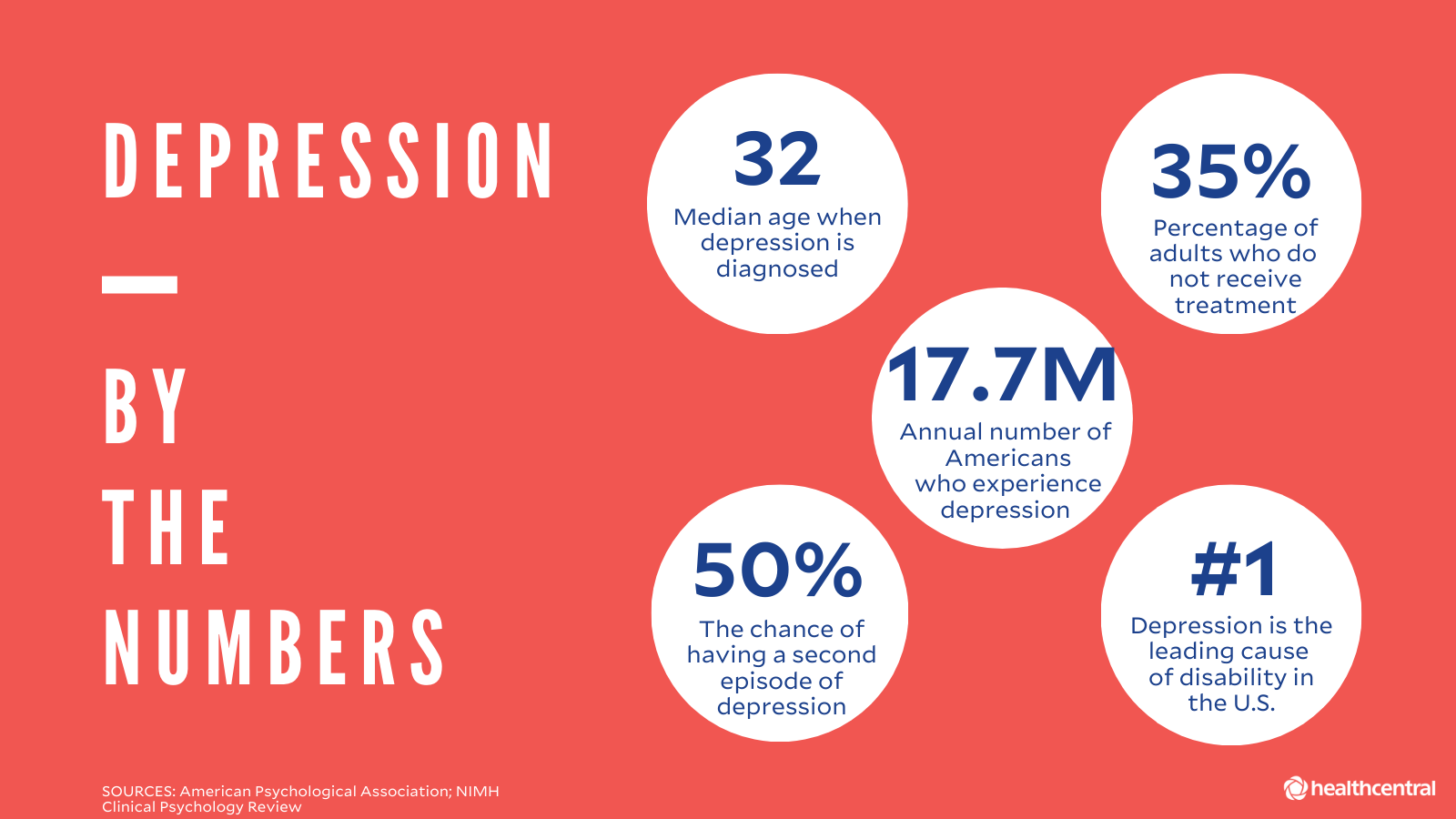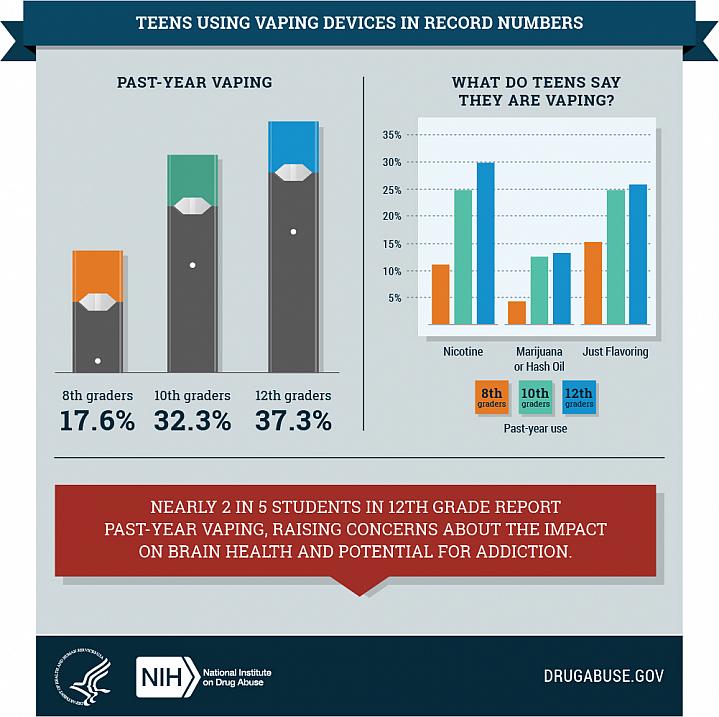
In today's day and age, depression is growing rapidly as a major epidemic, "In fact, it's stated that more than 300 million people worldwide have depression" (Koskie). It's all around you and affects everyone life. It may be your sibling or friend who has depression or is going through a tough time in life. Depression needs to be viewed and recognized for what it is and what it causes. It has several side effects and causes many feelings and thoughts to arise. In some cases, it even causes thoughts or acts of suicide. Depression is an epidemic that is on the rise, but there are solutions to it in today's time.
Depression goes back so far in history that there is no way of knowing exactly when or how it may have started or recognized. With that being said, not a single person or group could be said to have discovered depression. "It's estimated that 16.2 million adults in the United States or 6.7 percent of American adults have had at least one major depressive episode in a given year" (Koskie). It is very frequently happening. Though there are several different reasons why these depressive episodes happen because there are different types of depression and leading things that cause it. "Every 40 seconds, we lose somebody to suicide" (Koskie). That's how big of an impact it causes. When you go to calculate the math, that's around 13,140 people in a year. Some of the symptoms according to Koskie:
• Extreme irritability over seemingly minor things
• Anxiety and restlessness
• Loss of interest in activities
• Fixation on the past or on things that have gone wrong
• Thought of death or suicide
Depression can be seen in your friends or family, and we work together to try to help and be there for that person. You try to get that loved one the help that they may need depending on the situation. There have been researched studies that have been done all over in schools in the community. Most people with depression usually range in the ages of late teens and mid-twenties. (Attachment1)
There are many treatment options to investigate the depression. There is medication, Psychotherapy, Repetitive Transcranial Magnetic Stimulation, Light Therapy, and Electroconvulsive Therapy (ECT). You can sit down with a person and talk about what's wrong and possibly figure out a plan. "Psychotherapy was found to have a significantly lower rate of relapse (26.7 percent) than medications (56.6 percent)" (Koskie). Therefore, Psychotherapy may be a better option. Repetitive Transcranial Magnetic Stimulation "method uses magnetic pulses o stimulate the parts of your brain that regulate mood" (Koskie). Light Therapy is used mostly in the autumn to wintertime with seasonal depression, because of the amount of reduced light outside and the effect it has on your body. "ECT is a procedure in which electrical currents are passed through the brain” (Koskie).
There are many reasons why depression may occur. Loss of family member or a bad relationship with someone whether it be family, significant other, or friend. There are six most common types of depression in America, them being according to Koskie:
1) Major Depressive disorder
2) Persistent depressive disorder
3) Bipolar disorder
4) Seasonal depression
5) Postpartum depression
6) Psychotic depression
Clinical Depression, also referred to as Major Depression is a health disorder where you lose interest in everyday life events and have no desire to doing anything. You feel depressed or sad all the time, which affects your day to day life. "Persistent depressive disorder is also called Dysthymia it is a continuous long-term (chronic) form of depression" (Mayo Clinic). You can be viewed as a downer, that you never seem to have any fun, people or you will realize that you're always in a gloom mood.
Bipolar Disorder or manic-depressive disorder affects about 2.8 percent of the United States population in a given year" (Koskie). One moment a person can be in a good mood and then, as if with the snap of your fingers, their mood can turn to an outburst of rage, anger, or depression with no apparent reason. They won't know where it came from or why. "Seasonal depression, also known as a seasonal affective disorder" (Koskie). It usually only happens during autumn through winter, during the times the holidays are near. "The reduced level in sunlight may disrupt your body's internal clock and lead to feelings of depression. Serotonin levels. Drop-In serotonin, a brain chemical (neurotransmitter) that affects mood, might play a role in SAD"
(Mayo Clinic2).
Postpartum depression is the aftermath of having a baby. "As much as 80 percent of new mothers experience the 'baby blues" (Koskie). The mothers are tired and exhausted from the new experience and not getting much sleep. All the pressure of keeping everything together, not to forget things. The new mothers may lose their appetite or train of thoughts. If it lasts more than a couple of weeks, it should be checked into more because it can be leading to major depressive disorder as well. Not only can this happen with the mother, but it can and does affect some fathers in the same way also.

There is also Psychotic depression. "When major depression or bipolar disorder is accompanied by hallucinations, delusions, or paranoia. It's said that one in thirteen people will experience a psychotic episode before the age of 75" (Koskie). A person will think they saw something that really was not there or didn't happen. Then will freak out at times or just simply think somethings there that truly is not.
All these different depression disorders are mostly having similar symptoms such as loss in appetite fatigue (tired all the time), loss of interest in doing things, and low self-esteem. Some causes and risk factors for depression are the following stated by Koskie:
• low self-esteem
• Anxiety Disorder Borderline Personality Disorder, Post-Traumatic Stress Disorder
• Physical or sexual abuse
• Chronic diseases like diabetes, multiple sclerosis, or cancer
• Alcohol or drug use disorder
• Certain prescription medications• Family history of depression
• Age, gender, race, geography (Koskie)
All of these are examples of what may cause depression for some of the population. The stress of situations in life build up over periods and lead to depression. Symptoms and effects of depression can sometimes lead to the thoughts or actions of suicide.
Jowit, on a United States government website states, the describe depression as "losing interest in important parts of life" Then "A visceral description is quoted by the UK campaign group Mind 'It starts as sadness, then I feel myself shutting down, becoming less capable of coping. Eventually, I just feel numb and empty" (Jowit). This shows how a modern-day person would feel inside while dealing with depression. A study shows, "While rates for depression and other common mental health conditions vary considerably, the United States is the 'Most depressed' country in the world, followed by Columbia, Ukraine, The Netherlands, and France. At the other end of the scale are Japan, Nigeria and China" (Jowit). (Attachment2)
When diagnosed with depression, usually it is diagnosed if the symptoms have been going on for two weeks or longer. Then the doctors will look into the possibilities of what kind of depression a person has if any. Next, the doctors/ professionals can sit down with the patient and come up with a plan to resolve it together. "Clinical depression is treatable. Though, according to the WHO, less than 50 percent of those worldwide with depression receive treatment" (Koskie). For treatment the most used method tends to be antidepressants and counseling. For the majority, it works the most efficiently. Though each treatment method works well for its type that it is treating. Some don't always go for the medications because of cost and time. "According to a 2013 study, therapy had a lower rate of relapse at the one- to two-year follow-up. Psychotherapy was found to have a significantly lower rate of relapse (26.5 percent) than medications (56.6 percent)" (Koskie). Showing that in some cases just getting therapy may be a better option than the medication: "electroconvulsive therapy may be used which sent electrical currents through the brain" (Koskie).
When dealing with seasonal depression the main treatment you hear about is Light Therapy. This is because during the holidays there is usually less light and sunshine outside, and it affects your body. Bringing down your mood sometimes leaving you not understanding why. So, people use light therapy which tends to work in those cases. When it comes back around to the spring and summer it sometimes improves on its own without treatment. It's said that "For severe cases, lectroconvulsive therapy may be used which sent electrical currents through the brain" (Koskie). Even though there are all of these treatments and methods of attempting to help with depression, there is honestly no absolute way to say for sure that you will cure/fix/or change the depression. "Because it often starts in childhood or during the teenage years, identifying children at risk of the condition may help them get early treatment" (Mayo Clinic). As well to get diagnosed your doctor may do a physical exam, lab test, or a psychological evaluation. He/she will ask several questions about your past health problems. When taking the lab test, the doctors are trying to rule out any more chance of having to do with your physical health first. Once they have done that, then they will begin discussing your thoughts and how you feel. They are trying to evaluate what symptoms you have to be able to tell what kind of depression you may have. It's virtually a list they are checking off till they find the problem and try to come up with a solution. There is a difference between a child having depression and an adult. "For an adult, the mood occurs most of the day for two or more years. For a child, the mood or irritability occurs most of the day for at least a year" (Mayo Clinic). Some of the medications that are possible to take within the category of antidepressants are "Selective Serotonin Reuptake Inhibitors, Tricyclic Antidepressants, and Serotonin and Norepinephrine Reuptake Inhibitors" (Mayo Clinic).
When finding the right medication ,if you were to take medication, you may need to try several different types or combinations before you find the one that works for you. You should not stop taking any antidepressants abruptly because it can cause worsening in depression or a type of withdraw. You also most likely should not take the medication if you are pregnant or plan on becoming pregnant because of the risk it would put on your unborn child. It would be est to talk to your doctor first. "Although antidepressants are generally safe when taken as directed, the FDA requires all antidepressants to carry a black box warning, the strictest warning for prescriptions" (Mayo Clinic). This is because at the beginning of taking a new dose or prescription of antidepressant, teens and young adults have a greater chance of suicidal thoughts or behavior.
Albert Campus' whole theory honestly connects through the epidemic of depression;
"Albert Camus was a Franco Algerian philosopher with some great insight on the meaning of life, why you should look to this life and not the next, and why suicide is a poor choice"
(Hendricks). He was always referring to what is the meaning to life. A lot of people with depression have these suicidal thoughts cross their minds as well. Camus does, however, state boldly about the meaning of life, "there isn't one and we can't make one either" (Hendricks). Everything Camus speaks of is an absurdity. He talks of how absolutely nothing in life has That being said, he most likely would think that depression is all attempted excuses for things that truly do not exist. Therefore, talking about solutions to depression, such as the medication or other methods, he would also see those as having no meaning. Camus would suggest, "get outside, enjoy the sunshine, go for a walk by the beach, play some football, have lunch at a café' with a friend, refuse to give in to despair, and embrace the nothingness of existence by choosing to carry on with what you enjoy doing despite the lack of meaning to your actions" (Hendricks). Even though he saw that things in life had no meaning in his opinion, he still did not suggest giving up on life completely. Just live life to the fullest: that is the best you or anyone can do.
Though in today's time depression does exist. It is real and affects people. It has been viewed as an epidemic for longer than anyone knows. The treatment said have worked for many people in the past and may work on others in the present and future. Every individual mental health professional may have different opinions on reasons or methods, but most revolve around the same idea of helping the patient work to resolve or help their depression. The thought and knowledge of depression are important to be known and discover more each day.
Works Cited
Hendricks. (2018, October 5). The meaning of life: Albert Camus on faith, suicide, andabsurdity. Retrieved from https://bigthink.com/scotty-hendricks/the-meaning-of-life-albert-camus-on-faith-suicide
Jowit, J. (2018, November 10). What is depression and why is it rising? Retrieved from https://www.theguardian.com/news/2018/jun/04/what-is-depression-and-why-is-it-rising
Koskie, B. (n.d.). Depression: Facts, Statistics, and You. Retrieved from https://www.healthline.com/health/depression/facts-statistics-infographic#1
Mayo Clinic. (2018, December 8). Persistent depressive disorder (dysthymia) - Symptoms andauses. Retrieved from https://www.mayoclinic.org/diseases-conditions/persistent-depressive-disorder/symptoms-causes/syc-20350929
Mayo Clinic2.Retrieved from https://www.who.int/mental_health/management/depression/wfmh_paper_depression_w mhd_2012.pdf?fbclid=IwAR1ggbmqIBXscX9I24OKjeQYj0ksMXFLMkaMqS8Wkwb9 vu7V8wlZD7npyrI
National Institute of Mental Health. (n.d.). NIMH » Major Depression. Retrieved fromhttps://www.nimh.nih.gov/health/statistics/major-depression.shtml







